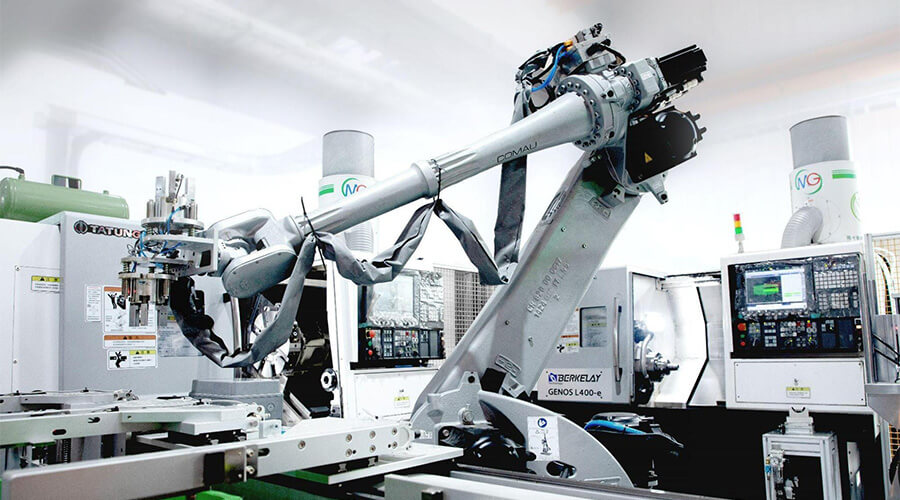Robotic Arm
A robotic arm is an automatic control device that is similar to a human arm functioning and able to do various tasks. The main purpose of this automatic device is to complete the movements of the "wrist and hand". It can do the same movement correctly and repeatedly countless times, which will be a great help to improve the labor force and increase production efficiency.
In recent years, we have imported robotic arms and online automatic measurement for an automobile parts smart production line.

- The Robotic Arm Didn’t Clamp FirmlyThe robotic arms may not clamp the part firmly due to insufficient air pressure, failure of the sensor, or external force and environmental factors. To solve this problem, we will need to maintain the robotic arms by programming or adjusting, and replacing the sensor of it.
-
Pinching Damage Caused By The Robotic ArmDue to the limitations of the space and the
robotic arm itself, it is not able to clear the cutting chip, and the remaining cutting chip may cause
damage to the clamped parts.
To improve the problem of clamping damage, we have installed external water spray or air-blowing equipment and ensured that the supply is sufficient to improve the clamping damage caused by the cutting chip. - Collision of Robotic ArmsDuring operation, the robotic arm may have collisions because of the incoherent of signals between the programs and equipment. In order to prevent collisions, it is important to check that the programs and sensors working harmoniously and track the programs continuously. Adding a sensor module also can be an option to improve the safety of the robotic arm during operation.
Above are the practical application scenarios of the robotic arms in the production line. We’ve improved the problems that happened in practical applications by adding sensors to establish a fool-proofing mechanism, adding an external air-blowing device to remove cutting chips, and doing program optimization. Through HRC (Human-Robot Collaboration) we’ve made our robotic arms into a highly efficient assistant in production.
